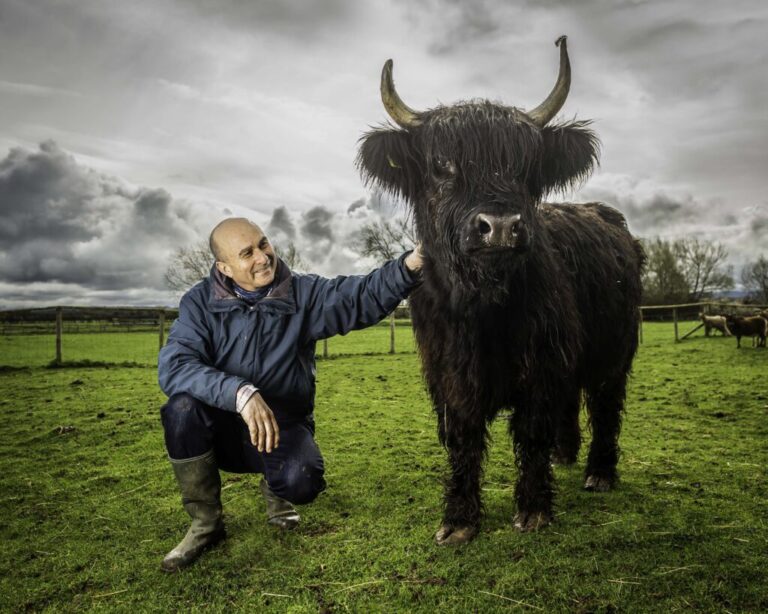Philip Lymbery is Global Chief Executive of Compassion in World Farming International and author of Sixty Harvests Left: How to Reach a Nature-friendly Future (Bloomsbury).
It was early morning, and a tractor was pulling a plough. Back and forth it went,
ploughing its lonely furrow. Behind the tractor, dust clouds spiralled and
caught the sun, creating an aura. A timeless symbol of the season. Only,
something was missing: there were no screeching gulls following the plough in
search of worms.
I took a closer look. The tractor was ploughing across a footpath, giving me a
bird’s-eye view of the newly upturned soil. As I stared down, do you know what
I saw? – nothing. There were no worms, beetles, or bugs desperate to get back
into the newly upturned earth. The soil was lifeless. It was like sand. I could
have been walking on the moon.
That field should have had millions of worms in every hectare. In every patch of
field the size of a football pitch, there should have been 13,000 species of
life with a collective weight of an elephant: five tonnes.
But instead, there was nothing.
That field was to be planted with maize (corn); a crop commonly used as animal feed.
Grown using chemical pesticides and artificial fertilisers, no wonder the soil was
dead.
It reminded me of seeing great green oceans of monoculture maize corn in the
American Midwest of Nebraska, much of which was destined for the feed troughs
of industrially reared chickens, pigs, and cattle. I remember seeing feedlots.
Hundreds of cows and calves standing in barren pens, not a blade of grass in
sight. Despite the hot summer sun, they had no shade. I watched as they jostled
in the searing heat for respite, trying to get into each other’s shadow.
Cruel and wasteful
It was a potent example of industrial animal agriculture, a regime that sadly now
also ravages the countryside across Europe and beyond.
Far from making food, industrial animal agriculture wastes it. Hopelessly
inefficient at converting crops into meat, it squanders human-edible crops
enough to feed four billion people – that’s half of humanity alive today.
It also undermines the very thing we need for food in the future: soil. Which is
why the UN has rightly warned that, carry on as we are, and we have just sixty
harvests left in the world’s soil. No soil, no food. Game over.
Turning things around means moving away from this failed industrial model, instead
embracing farming based not on cruelty, extraction, and decline, but on putting
back into nature’s bank account. Working in harmony with Mother Nature. Respecting
the welfare of animals; their wants, needs, and feelings. Caring.
Inspiring the future
Bringing farmed animals back to the land is part of what I see as the beautiful,
life-affirming, compassionate solutions that can save the future for our
children.
We can all help transform the countryside by supporting moves away from industrial
farming and embracing a regenerative future. In this way, we can reach a bright
new dawn for animal welfare, wildlife and the future for our children.
